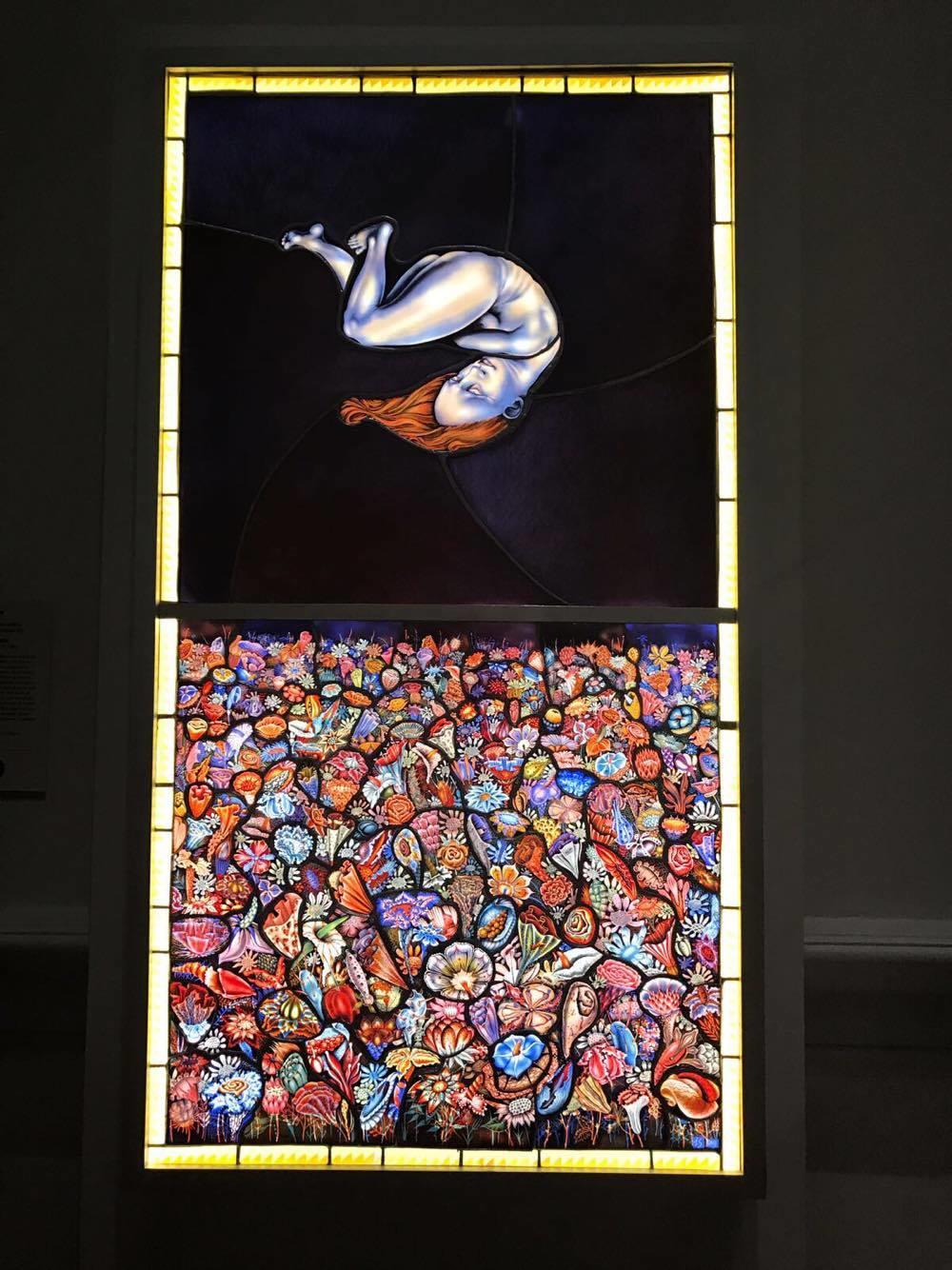In 2013, Judith Schaechter released a work of art named The Birth of Eve. This piece is an intricate combination of flash glass vitreous paint, silver stain, and copper foil. According to the artist, she is permanently inspired by the medium itself: glass is a highly challenging and time-consuming material to work with and each advance in this domain opens new avenues for other artists.
By the present moment, glass art has achieved a lot in developing numerous techniques of producing art objects, including fusing, flame-working, kiln-casting, blowing, cold-working, hot-working, engraving, cutting, etc. Yet, Schaechter believes that there is still a lot of space for exploration and continues moving the art forward by applying well-known methods in an entirely different way. The cultural context was highly favorable for this work as glass art was on the peak of its popularity due to newly appeared techniques, such as knitted glass and felted glass.
Judith Schaechter explains that her work is mostly spontaneous: this piece started with just a drawing of a girl in an awkward position as if she was falling from the sky. She then decided to use that girl as a symbol of Eve, and later on worked on the glass cutting for the garden. Thus, the paper at hand will attempt to prove that the artist’s success in portraying the whole biological life cycle from birth to decay has been achieved not only due to the originality of the texture but also through the effective use of color and composition.
Analysis
Color
The stunning effect produced by color is created mostly by hues, variations of temperature, and intensity. Multiple layers of glass allow the artist to come out with subtle combinations of hues: the central figure of Eve is both bluish (standing for decay) and pinkish (showing living flesh). This allows expressing transience of life and hints at Eve’s tragic destiny. The same idea is reinforced by temperature: the colors of Eve’s body are both warm and cold.
She is floating in a cold and hostile cosmic space while a vivid carpet of flowers is waiting for her underneath. Eve is evidently emerging out of nowhere into multi-colored life. The intensity and gaudiness of the garden is aimed to highlight Eve’s first impressions of earth which is filled with a lot of undiscovered secrets of nature. The golden color of the frame alludes to divinity of creation (as it was depicted in icons).
Composition
The use of composition (although created spontaneously) emphasizes the religious context of the artwork. The piece depicts a baby girl crawled up as if she was still in a womb. The baby, who represents Eve from a religious perspective, has her body postured downwards as if she is heading towards the garden of flowers underneath. The picture is divided into two equal parts with a clear-cut border between them.
While the bottom is totally occupied by the flower pattern without any particular focal points, the upper part features one central figure in the void. The earthly and the divine are therefore contrasted. This is religiously seen as God’s creations coming together for the first time. The garden is life: one can notice more signs of biology with insects flying around the flowers; this adds another layer of detail and gives the work a deeper meaning.
The cosmic space is nonentity: we cannot see the creative force (as compared with The Birth of Adam by Michelangelo)–the body of Eve is simply thrown from above. However, the paradox is achieved by the fact that she has not crossed the compositional borderline yet; this makes her both fall and soar. If it were not for the name of the picture, it could equally symbolize the death of Eve (supported by the colors of decay), which allows showing the whole life cycle. Placing the picture in the golden frame as a part of the composition creates a sense of limitation: our life can circulate only in this enclosed space.
Texture
The flowers, which are made mostly of glass, reflect light. Transparency of the material makes it visible that they are still untouched by humans. This represents nature before human interaction on earth. The use of flash glass and other shiny smooth materials such as copper foil, silver stain, and vitreous paint in the design of this masterpiece builds an emotional connection between the observer and the work of art. Vividness of colors is created through placing several layers of shining glass one over another. The use of foil (together with color contrasts and the flower ornament fully occupying one part of the picture) creates an allusion to a number of Gustav Klimt’s works (e.g. Life and Death), who was also highly interested in the same topic and used various media to express it.
Conclusion
The attempted analysis was aimed to demonstrate how different formal elements (texture, composition, and color) can reinforce one another to allow the artist to develop the same idea from different angles. I perceive this masterpiece from a positive standpoint, and have the impression that Schaechter attempted to enhance the value of life from both a biological and religious aspects. Of course, art cannot be interpreted from a single perspective. According to the artist, she intentionally left puzzles to unravel, which makes the work not only multi-layer, but also multi-dimensional.
